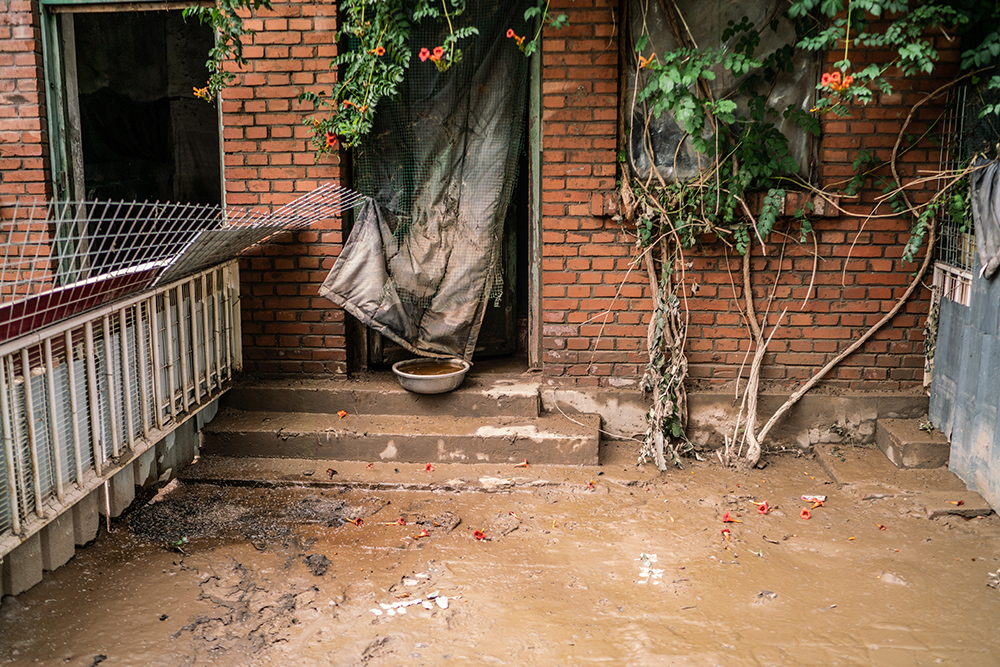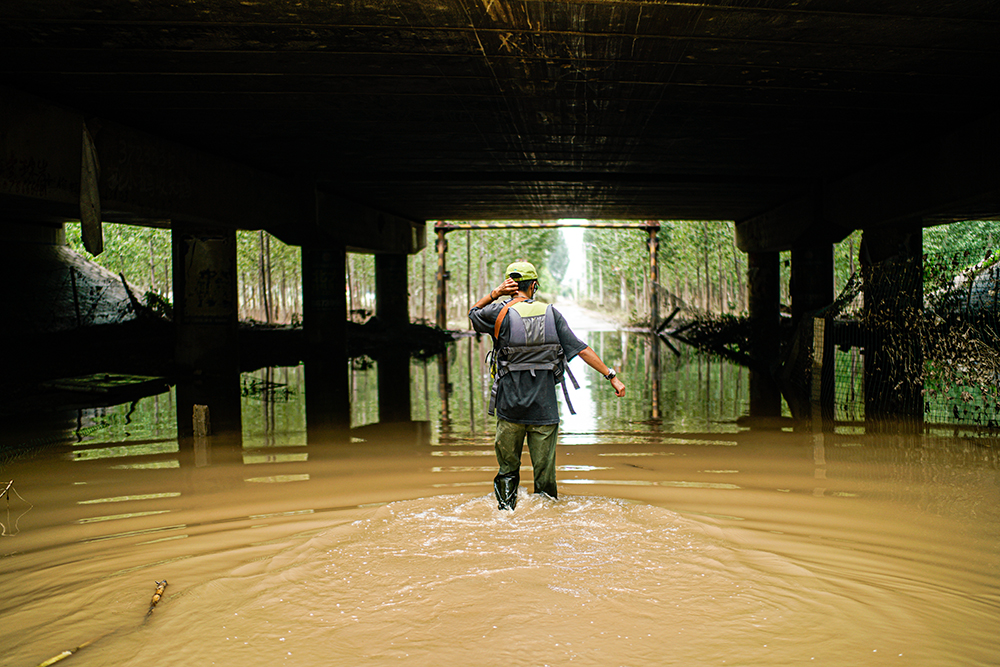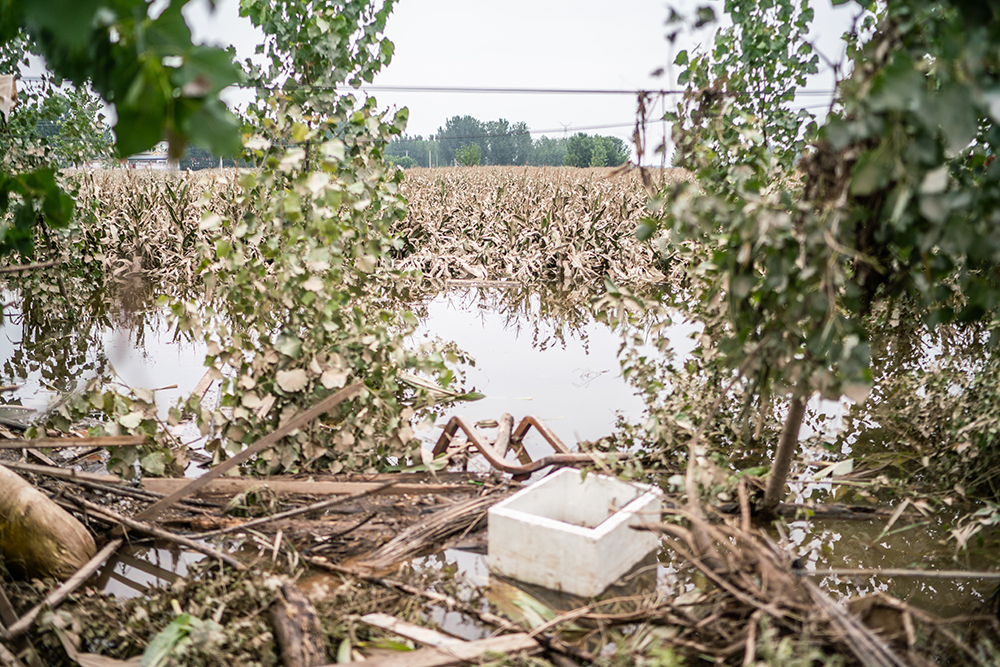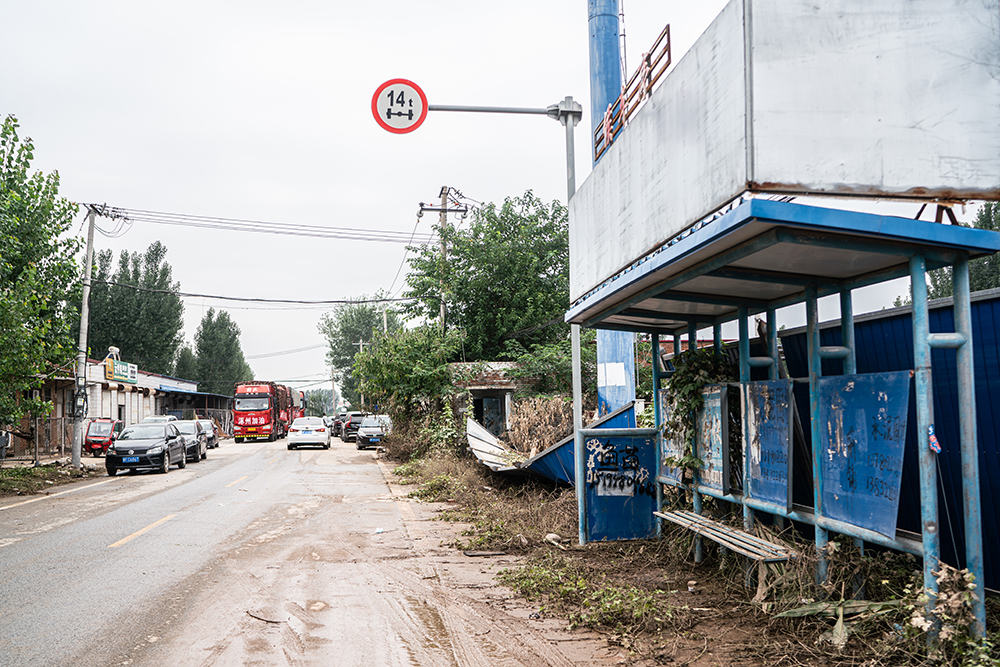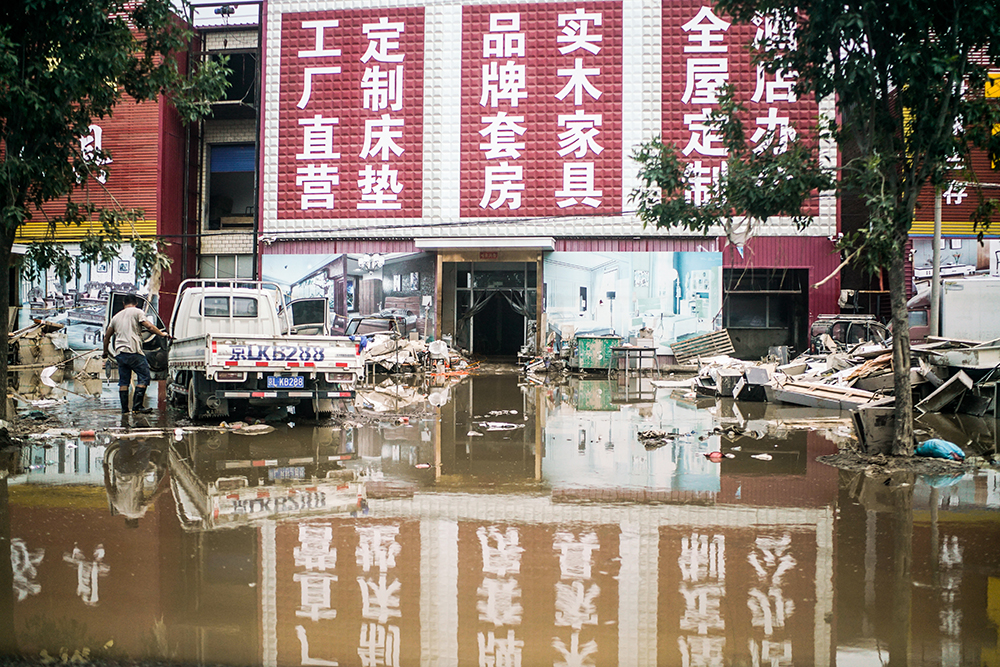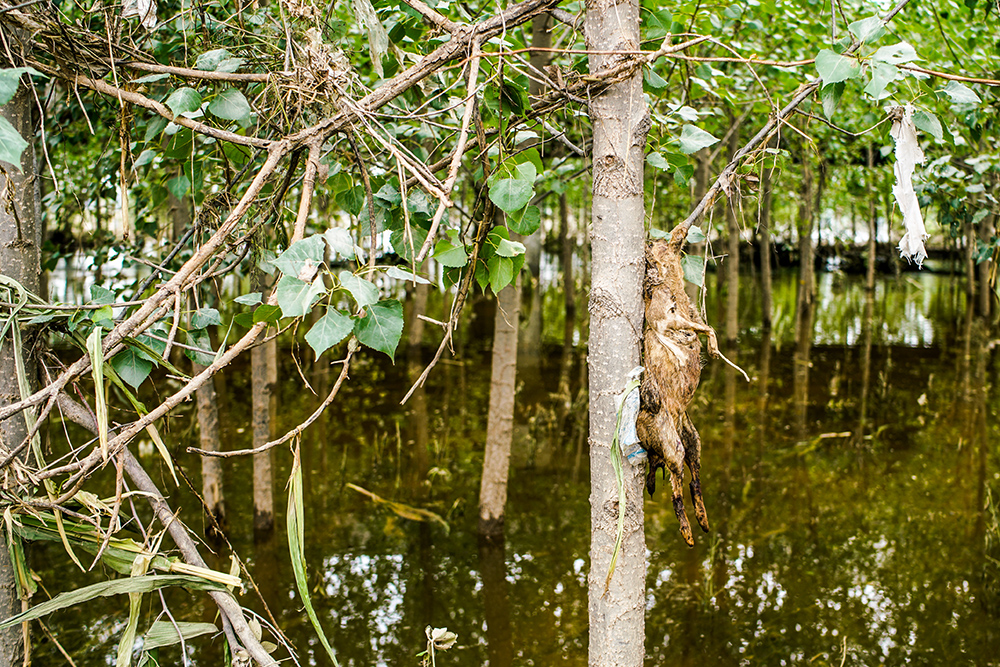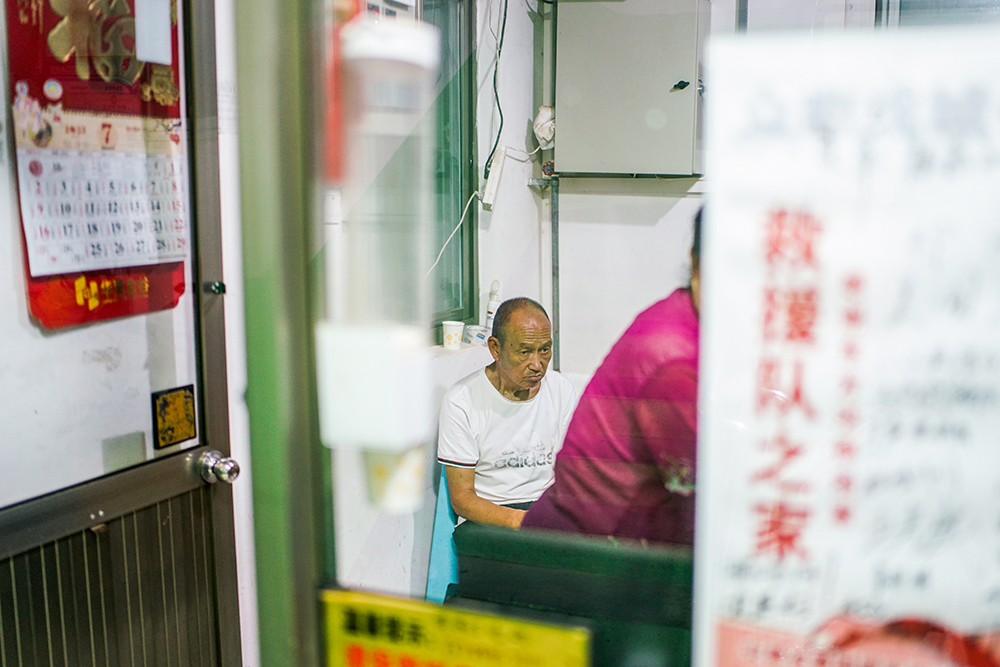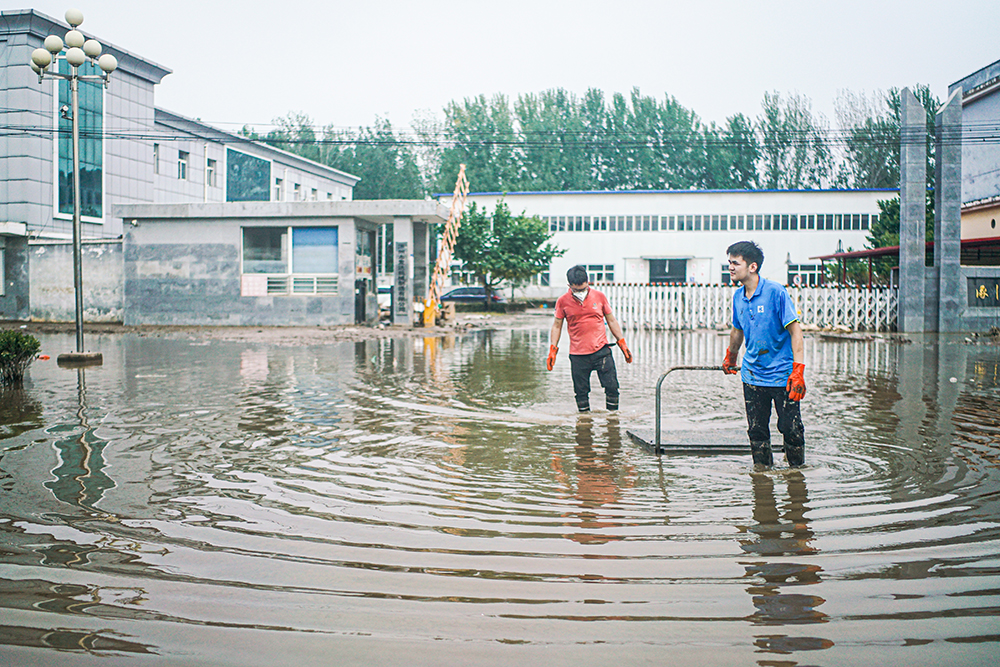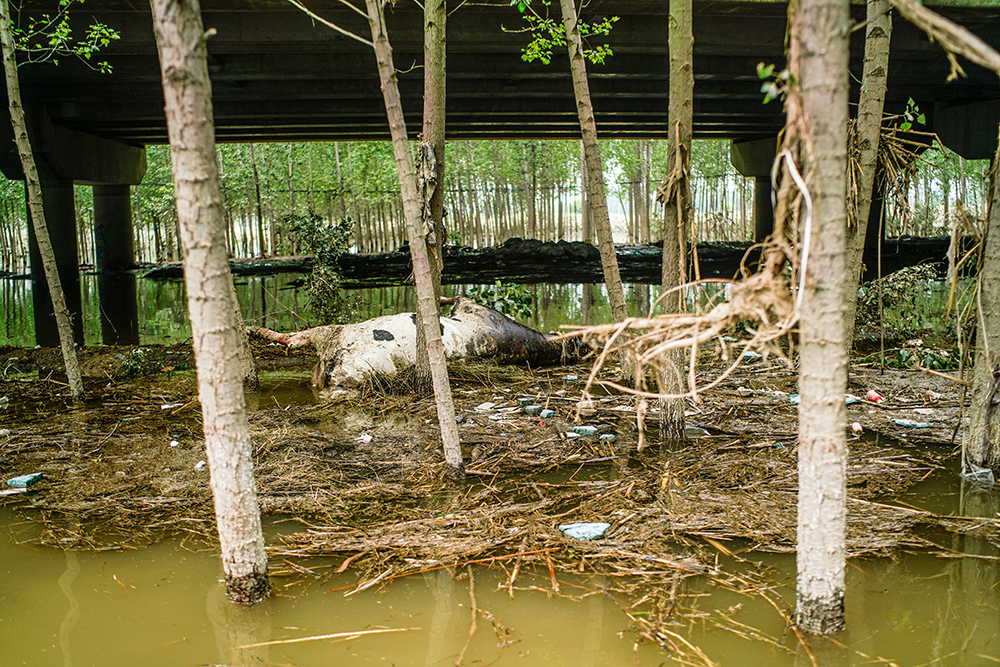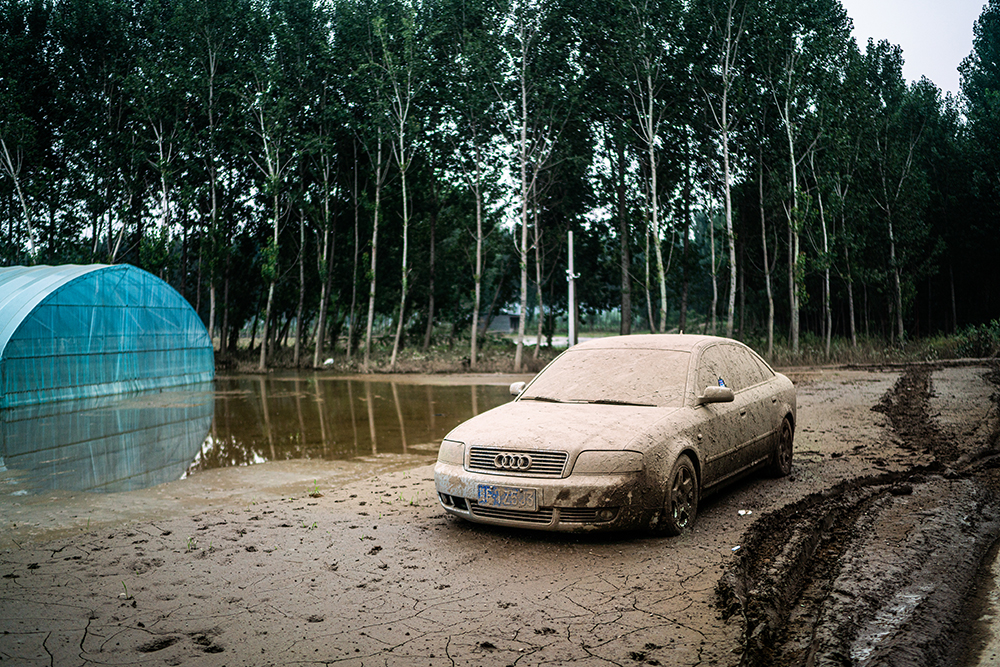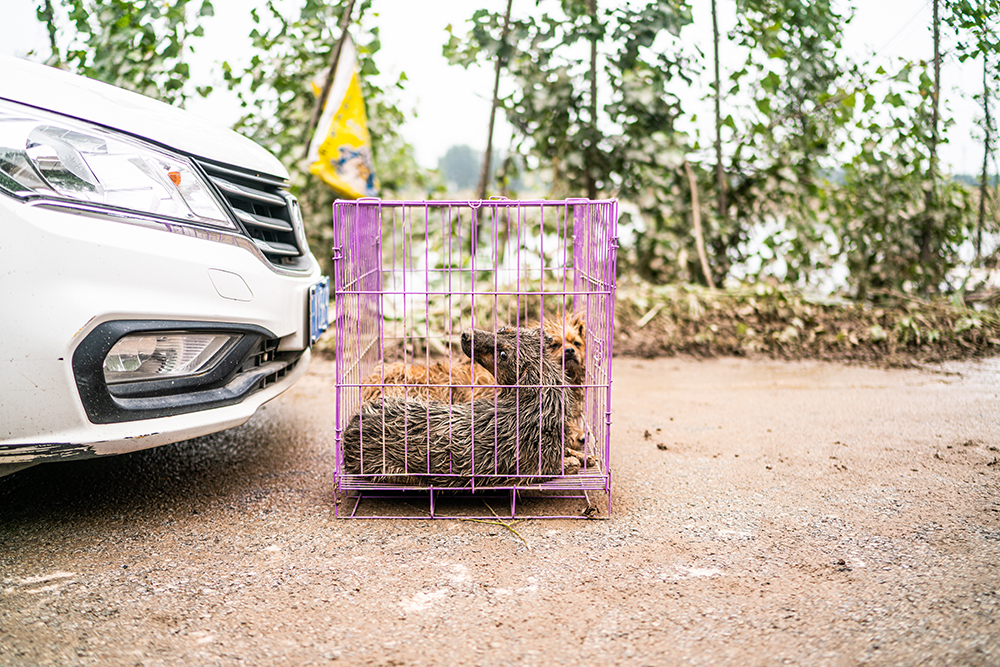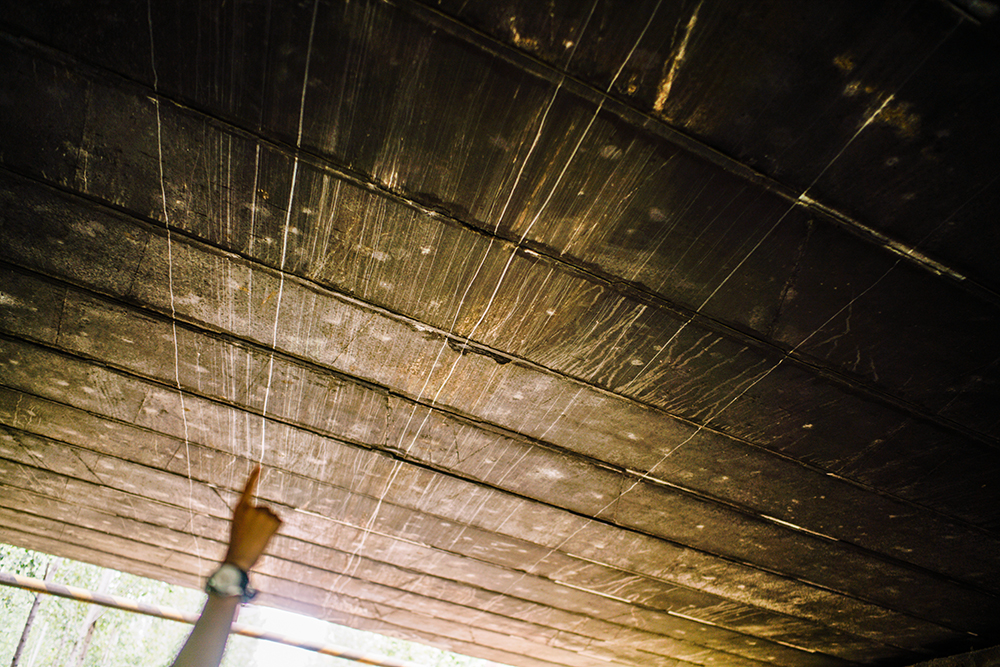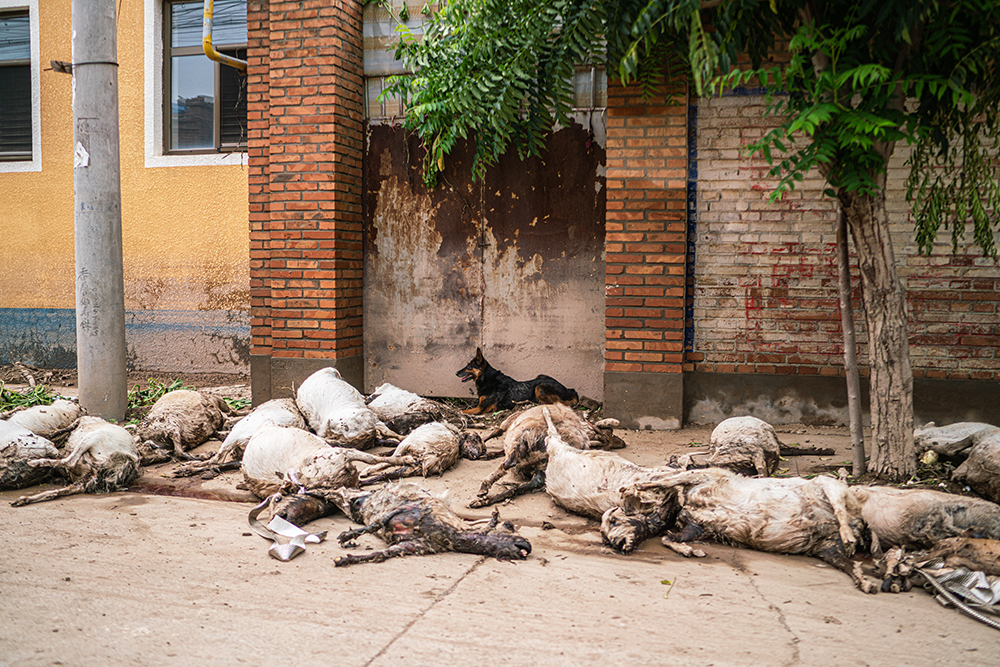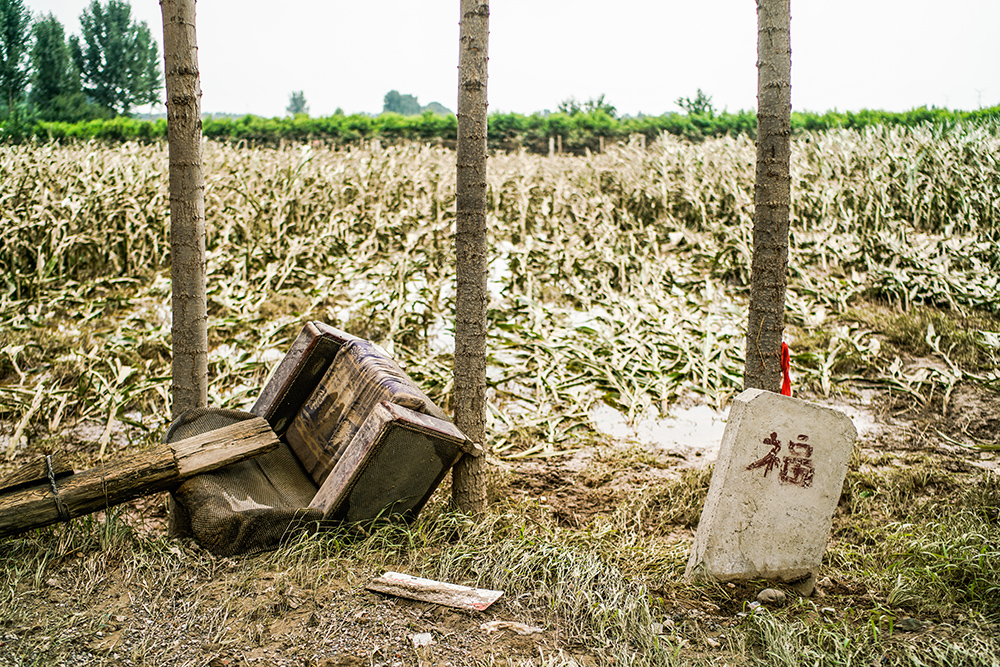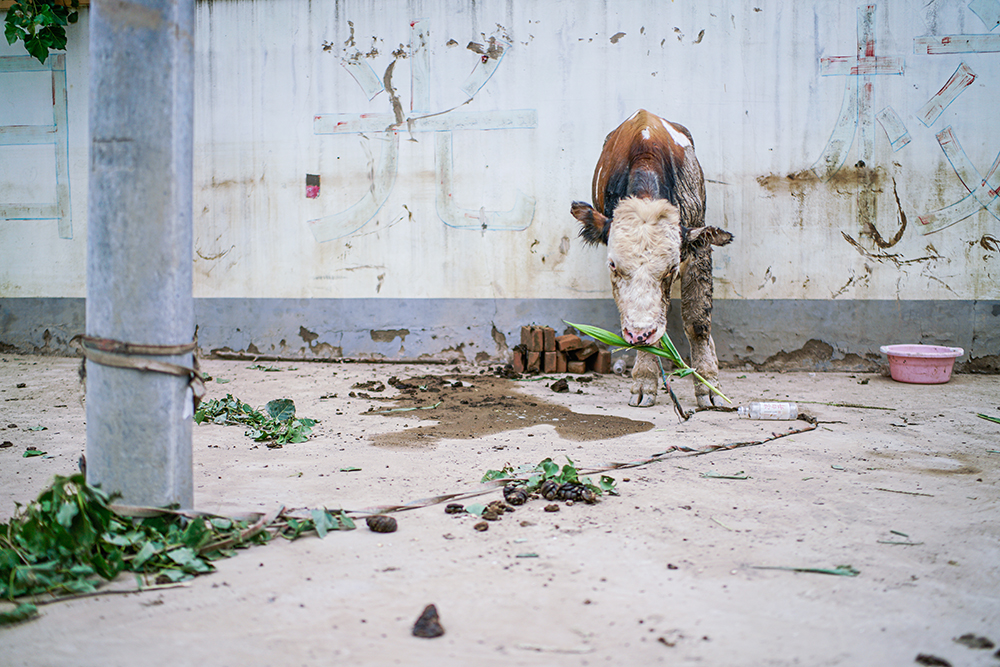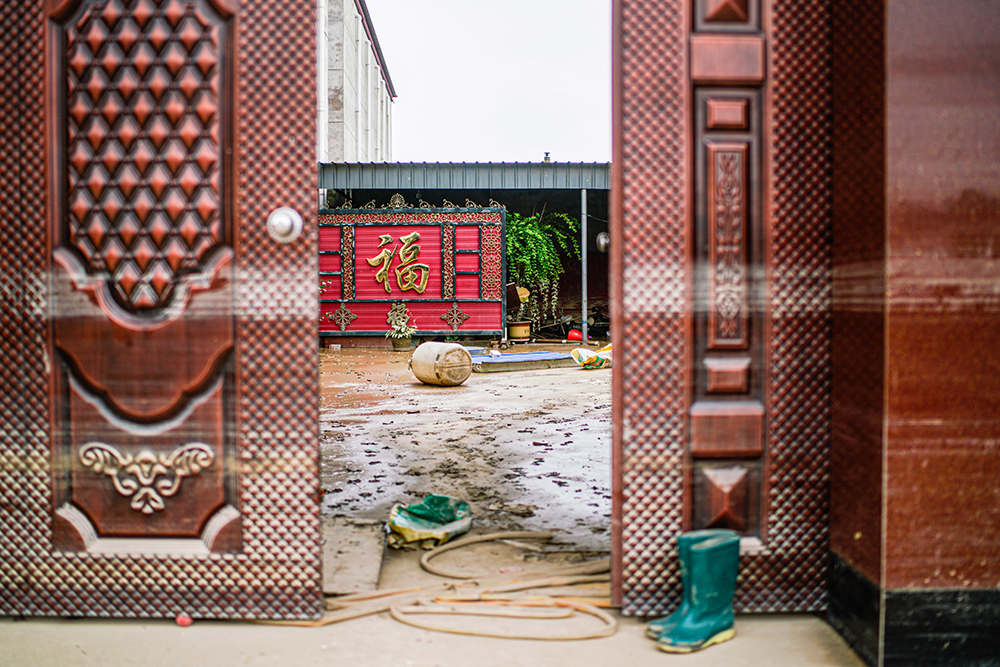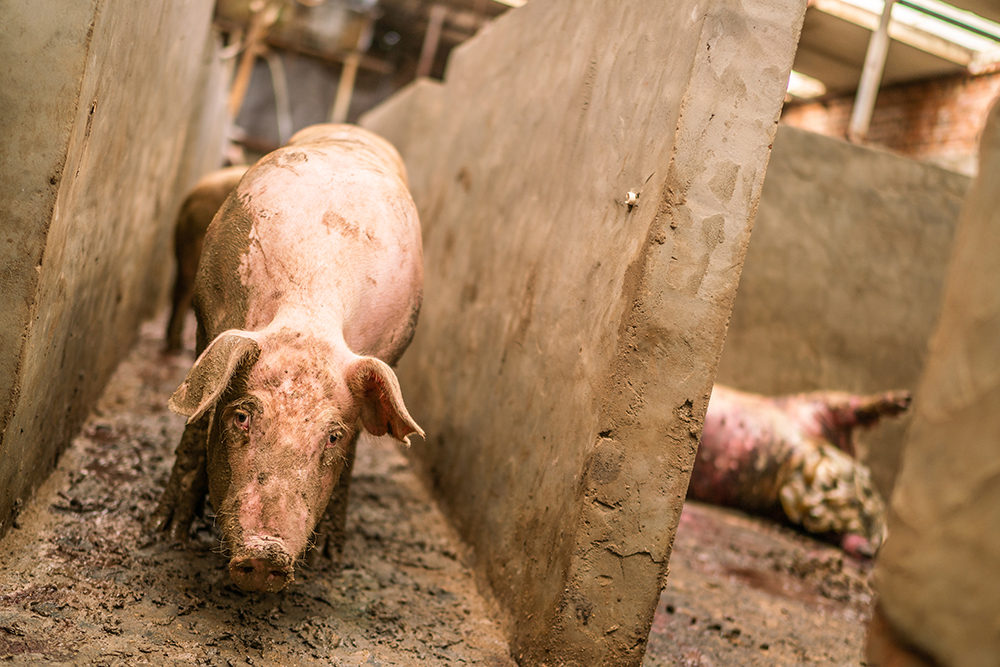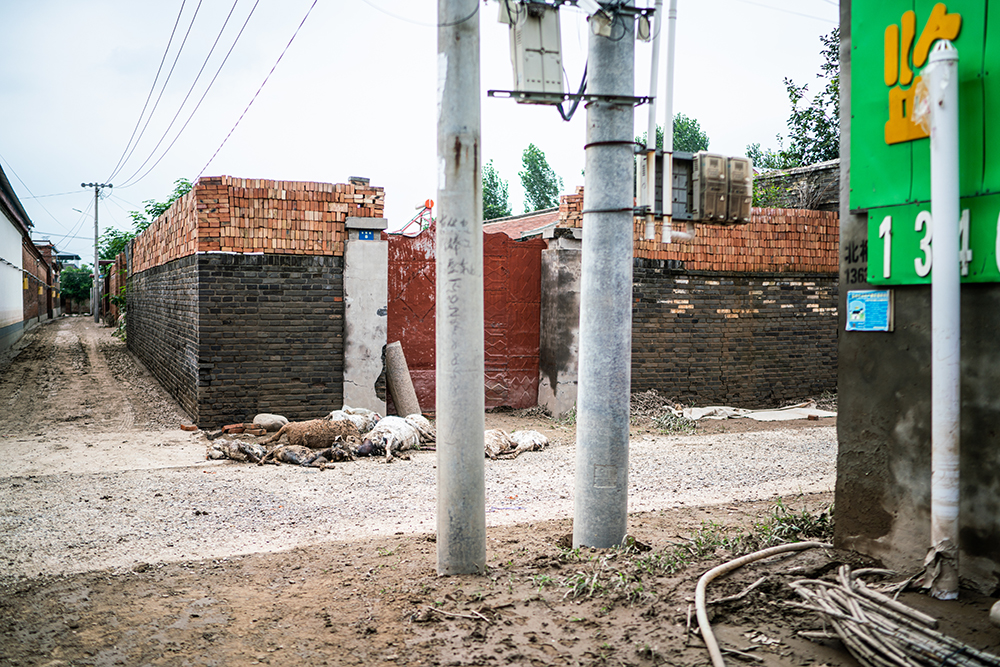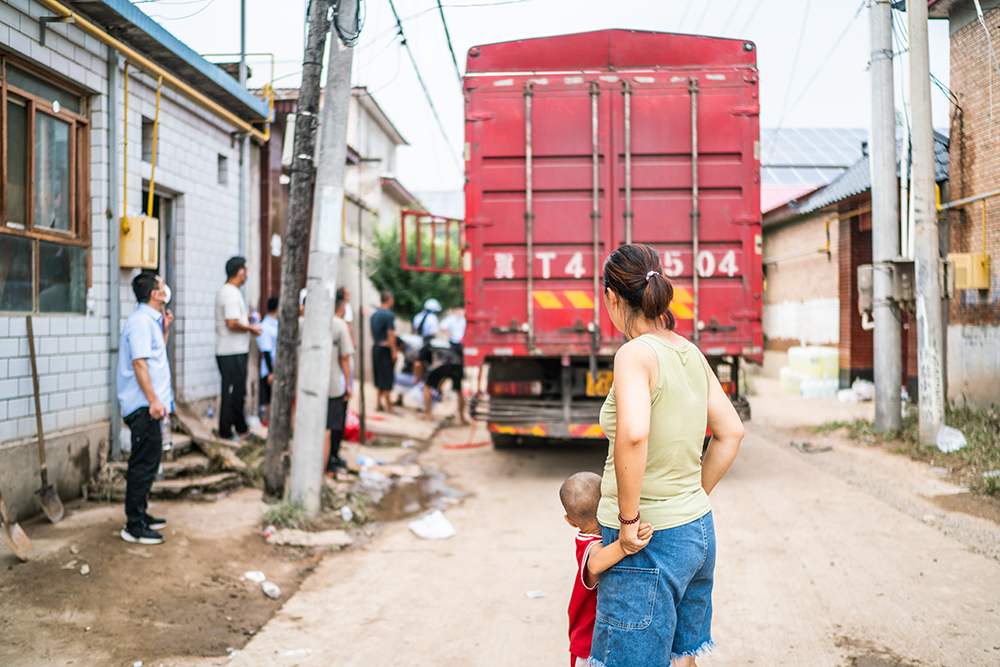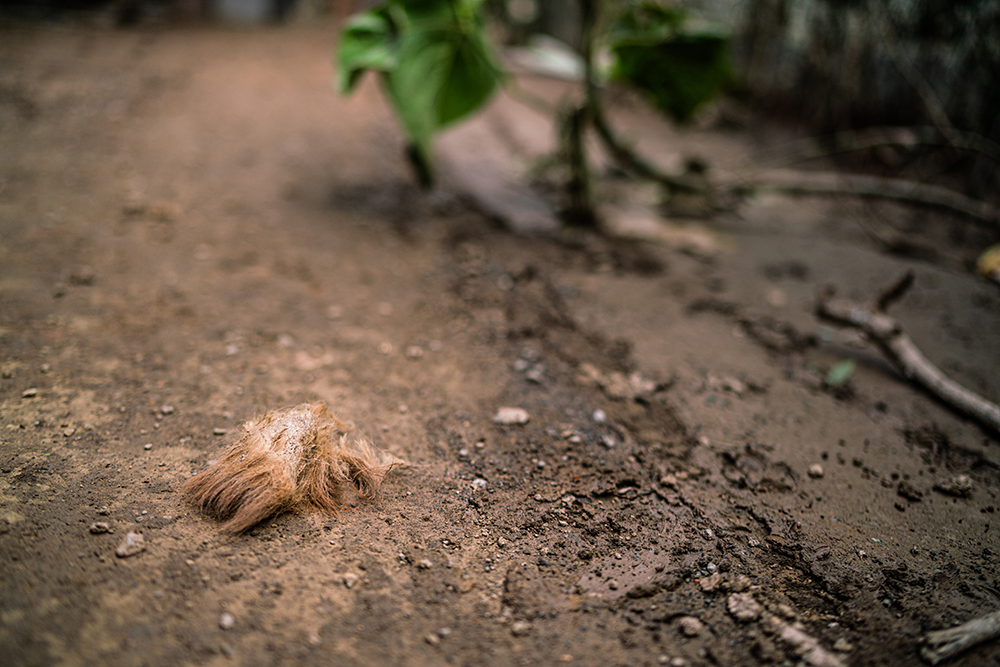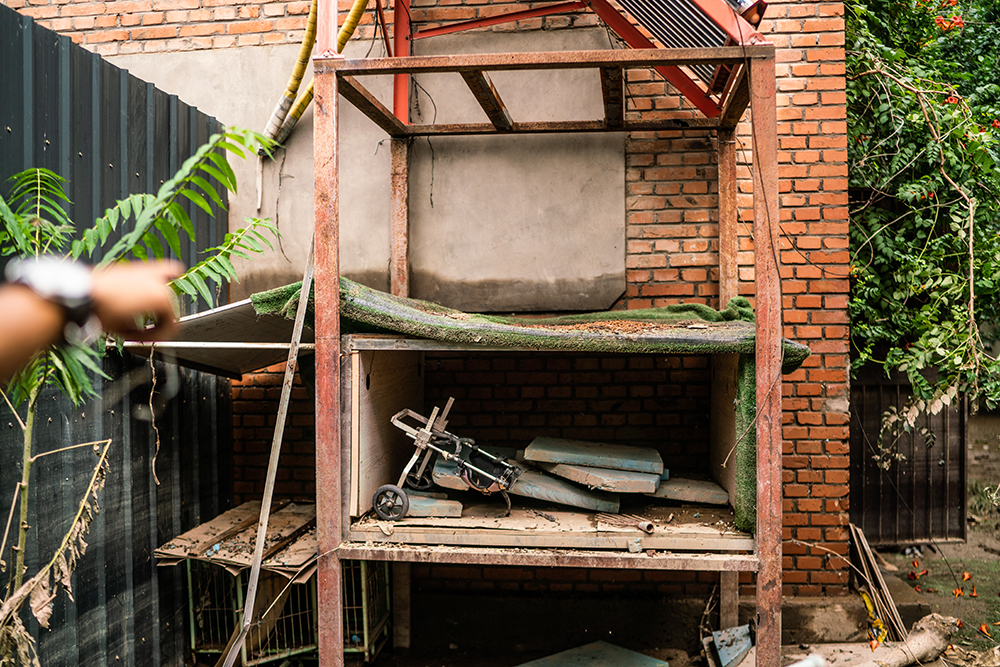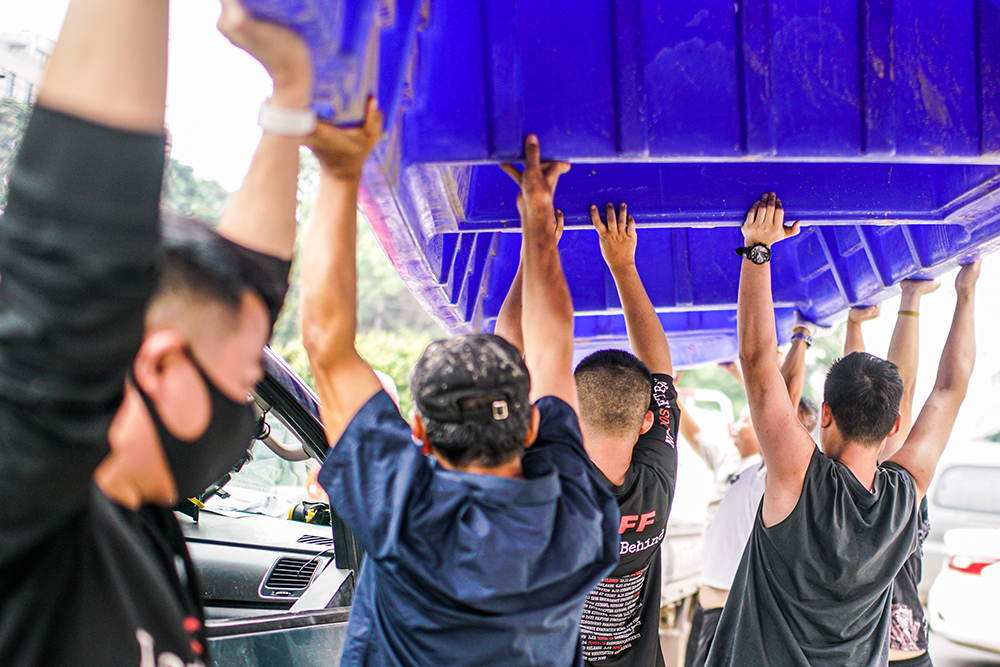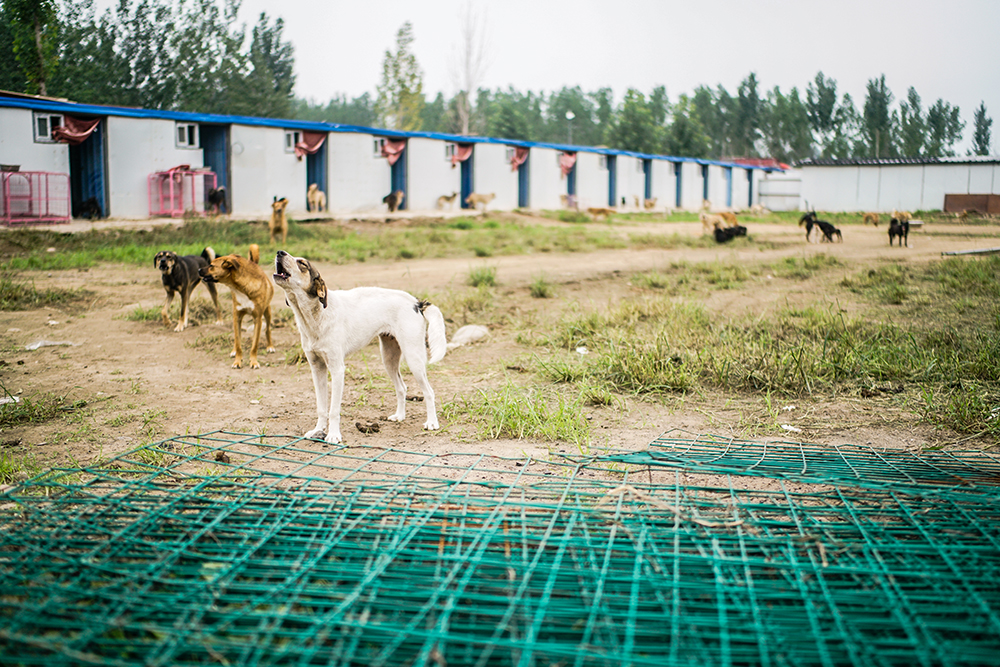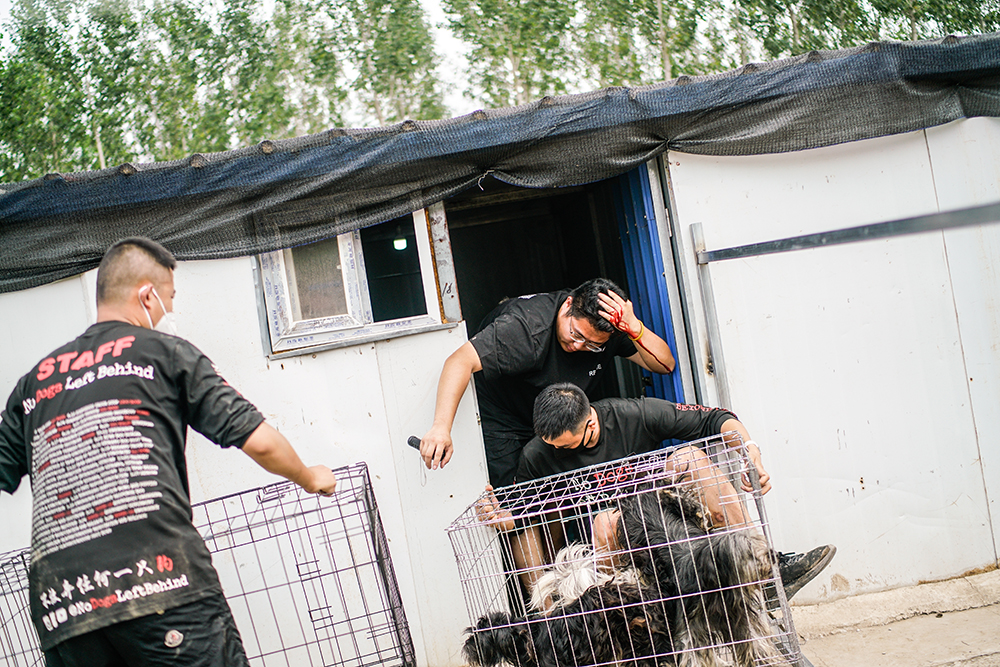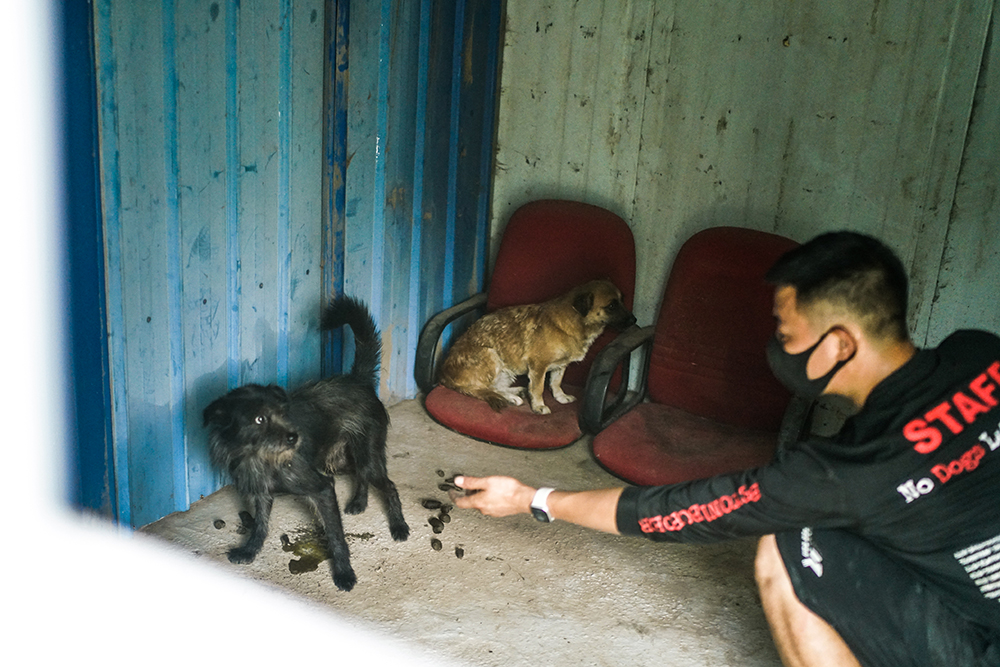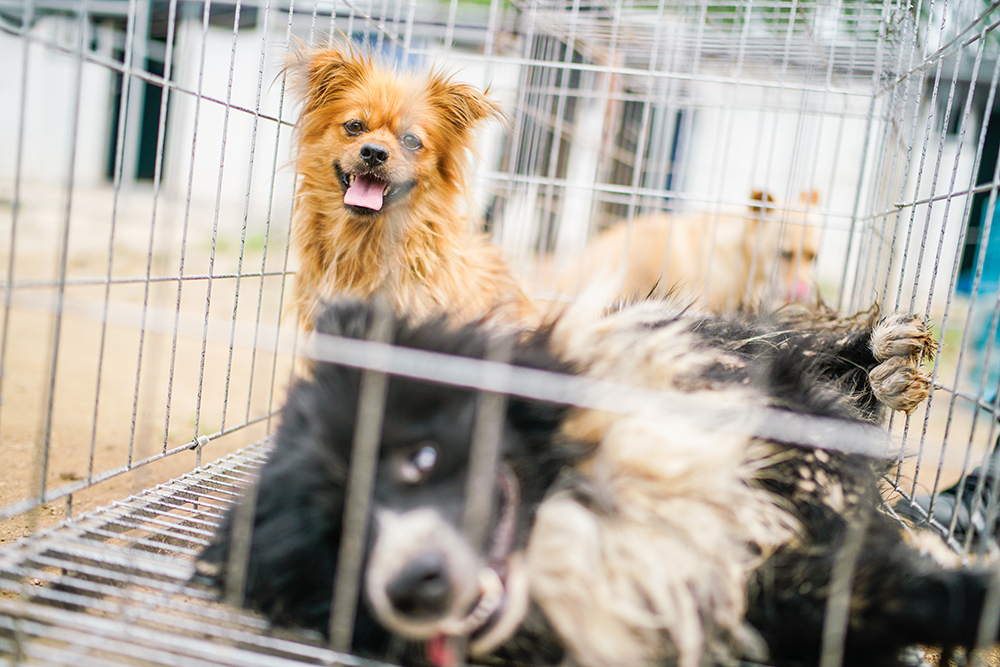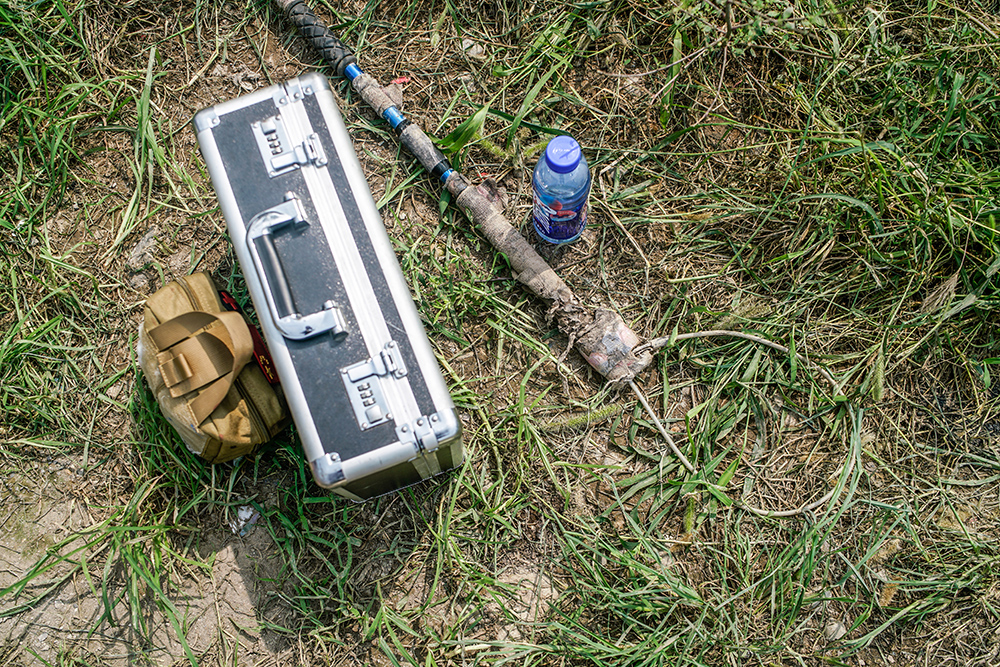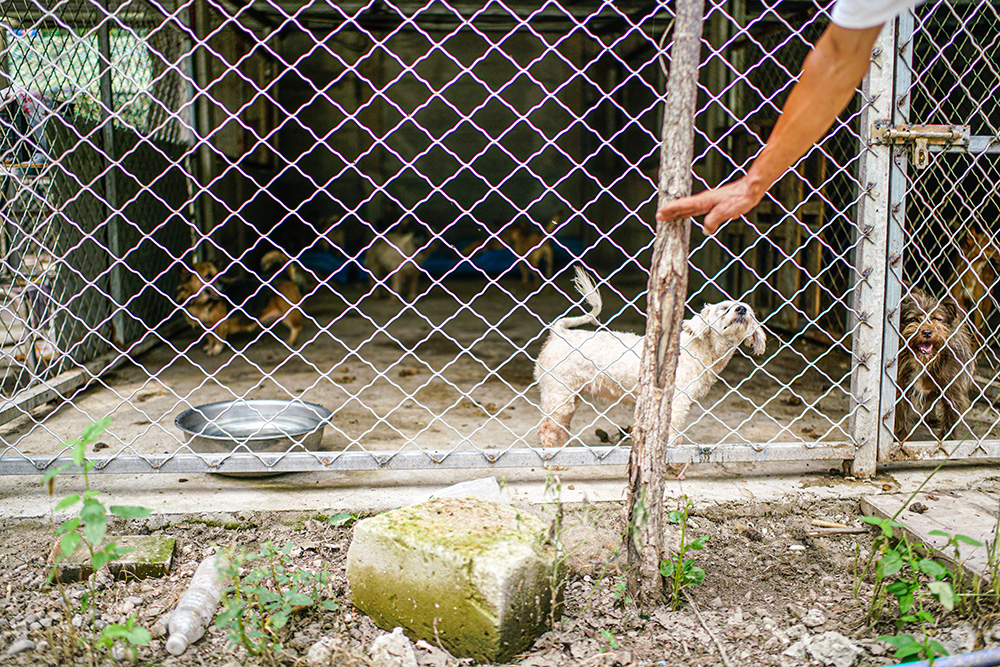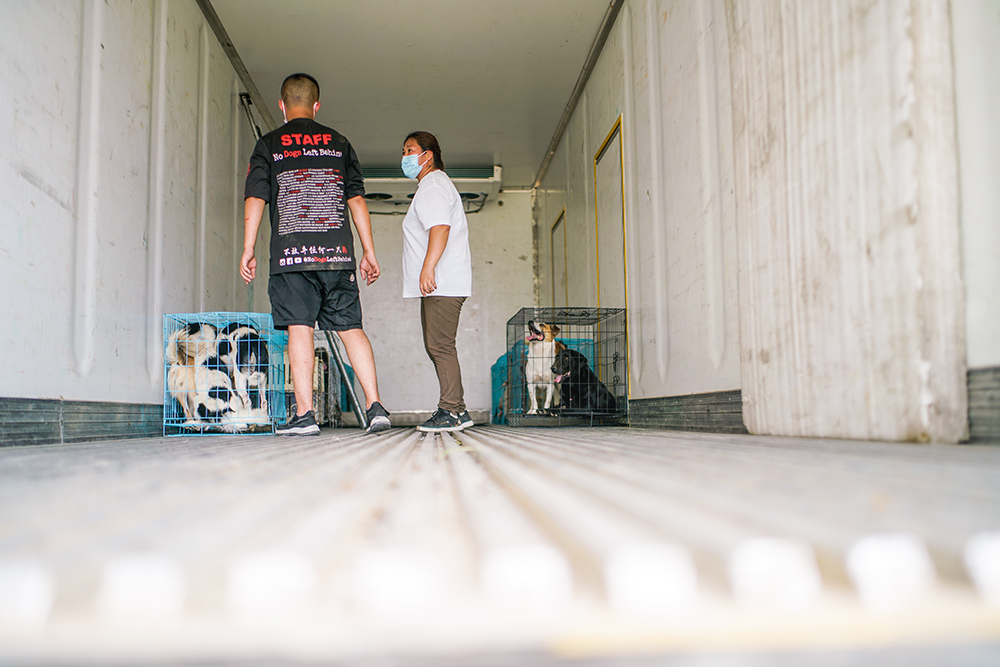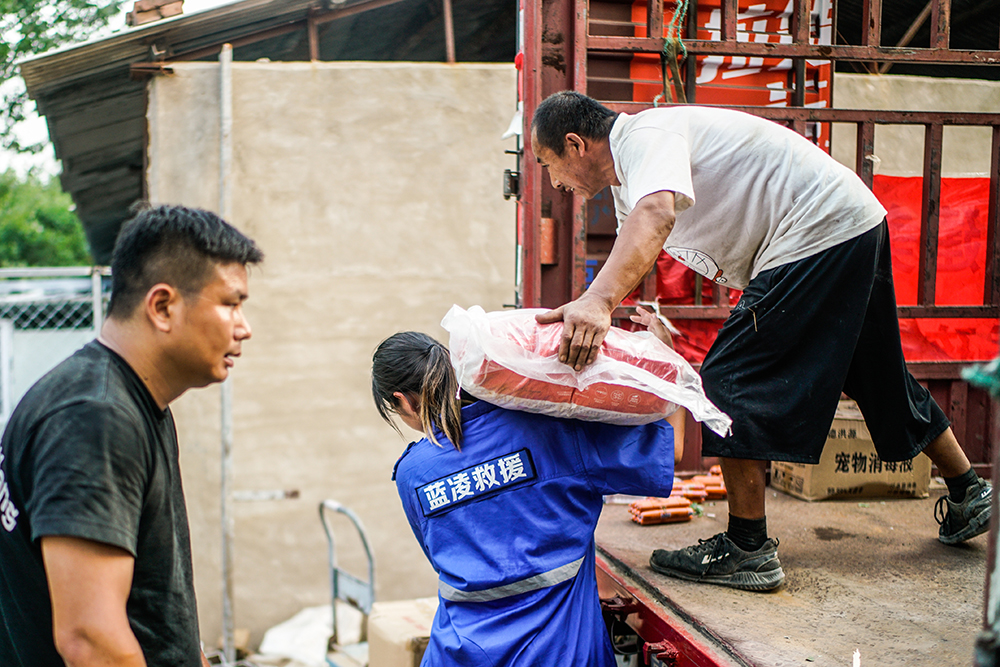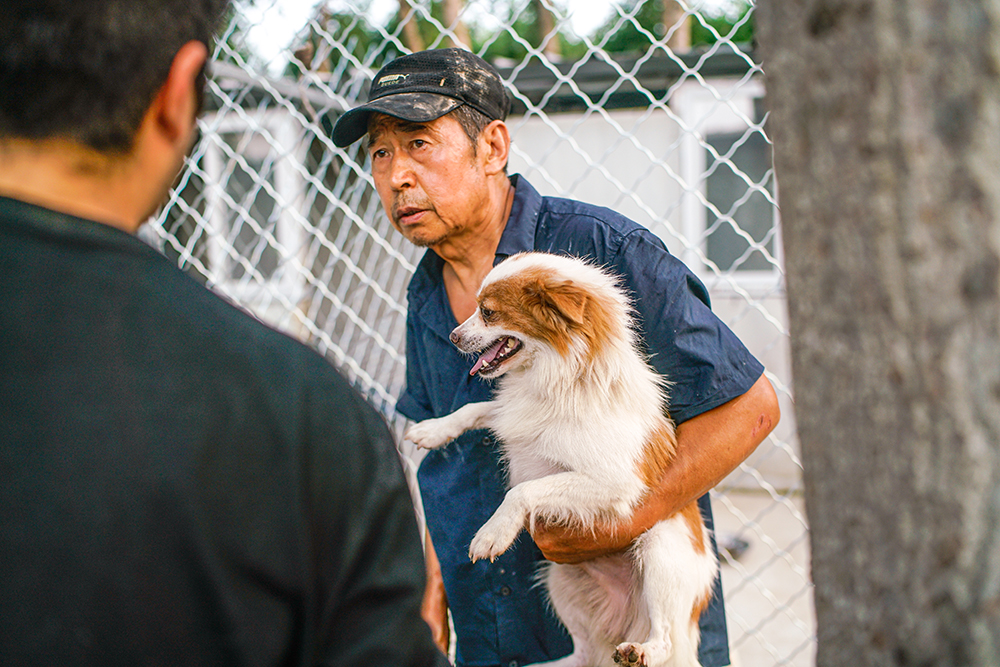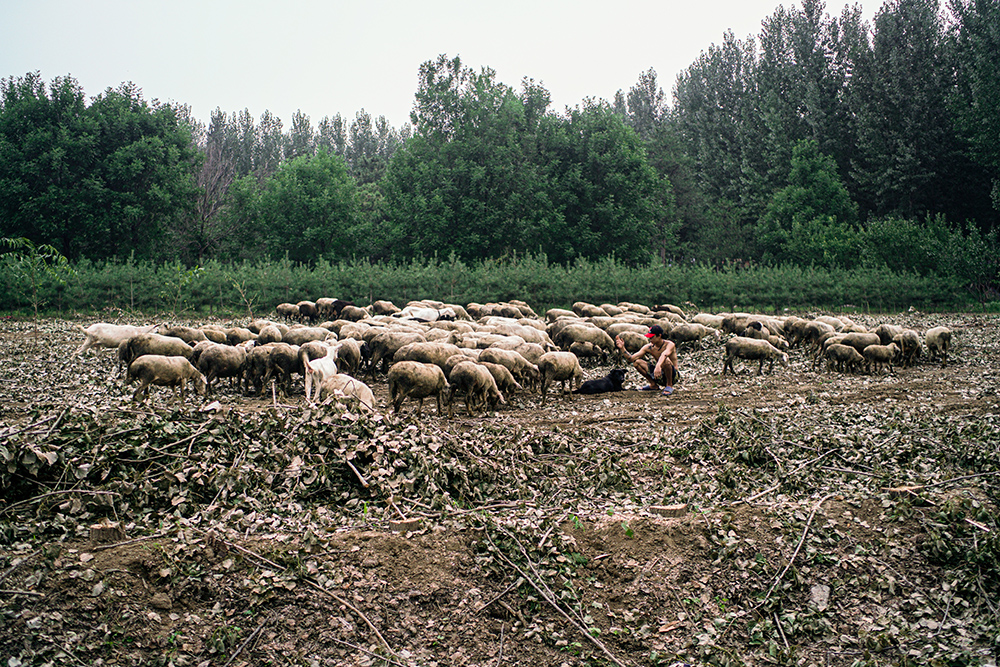The flood in Zhuozhou has receded, but there is a long way to go for locals to restore their lives.

All photos by Cai Xingzhuo
By CAI Xingzhuo
On August 7, a week after the storm, I went to Zhuozhou to capture the city’s post-flood scenes. In a rideshare car with volunteers, I headed for a village about 20 kilometers from the center of town.
Some standing water remained, but the entire vista could be summed up in one word: mud.
The ads on the village bus shelter were sodden. Buildings showed clear tidemarks. Dead livestock had been hauled out of the water. Cars were stranded on roadsides, soaked furniture was rotting outside stores. The one comforting thing was the smell of cooking as local people gratefully fed the rescue teams.
The Lanling rescue team rescued over 150 people and dozens of dogs. JIA Nan is a squad leader focused on animal protection and rescue.
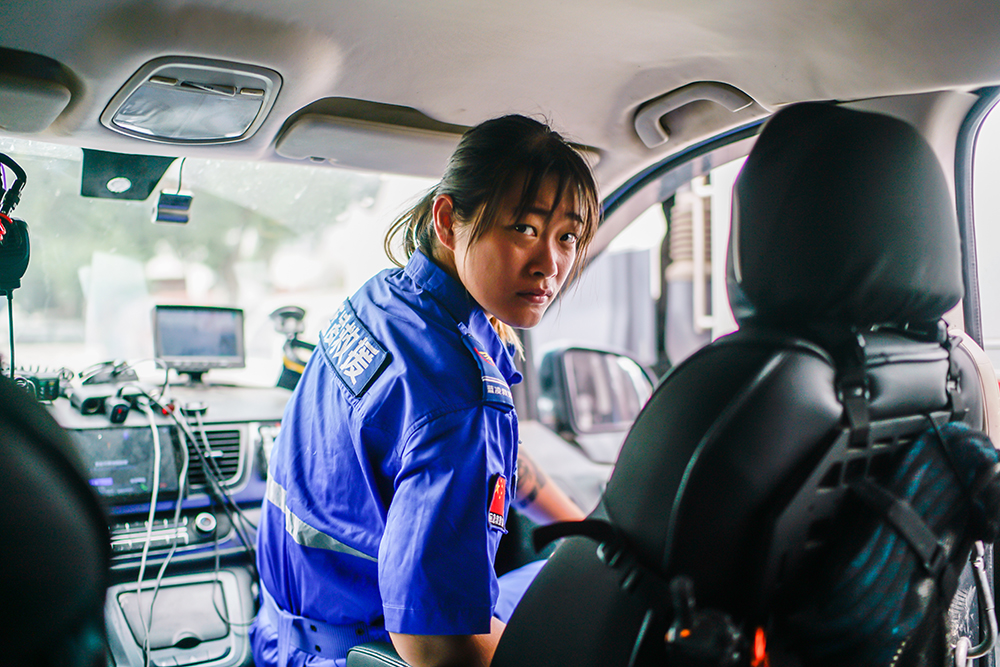
The following is her account.
I’m Jia Nan, the leader of the third squad in the animal protection division of Beijing’s Lanling Rescue. I'm a veterinarian and I’ve worked as a nurse in an animal hospital, and trained search and rescue dogs. I’ve been with our team of four women and 14 men for six months and this is my first time responding to a major disaster.
On August 2, we received a distress call from "Uncle Cao," who runs a small animal shelter in Zhuozhou.
Our rescue team is focused on people and animals involved in road accidents and we have very little experience of dealing with floods. We took five rescue vehicles with special water rescue equipment, two boats, a huge air cushion, a generator and satellite phones.
We were among the first to arrive. As the deputy leader, I have to be ready to step in for any situation and take over responsibilities. My tasks include managing the scene and ensuring logistical support. Team members who can swim go where boats cannot.
As we headed into town, I saw water everywhere and tons of floating trash. Nearer to the shelter, we came across at least eight other rescue teams. Some said that the water was as deep as four meters. Villagers looked disheartened and exhausted. Even though the rain had stopped, a dense mist reduced visibility.
Our team leader LIU Yintong jumped into a boat with another rescue team to see what needed to be done. After discussions, we decided to begin transferring people from small villages to safer areas right away. The rain had stopped long ago and the weather was scorching. Even in dry areas, our clothes were sopping wet. It was hard to tell if it was sweat, mist or water.
On August 2, we finished work very late. We began relocating the animals from the shelter first thing the next morning. It was still pitch-black. Our rescue team has a long-standing maxim of avoiding nighttime water operations. But with shoulder-mounted lights, I gauged the situation a few meters ahead and proceeded through chest-high water with the team and our guide, the shelter owner, behind me.
I could feel various items like tables, chairs, and benches, and even a large bed float by. The water was hardly moving, but when I opened a door, a rush of water came towards me, its force was strong enough that I needed the assistance of my teammates to proceed.
Wading into the murk and using my hands to clear the way ahead, I connected with a furry leg. I gently pushed the stiff body behind me along the water flow and continued into the dark.
When Uncle Cao recognized a white French bulldog, the first of many dead animals we would find, he cried out in desperation, calling its name, Lao Bao. Having been through this many times before, I needed him to calm down. “Right now, we’re dealing with not just one dog, but with dozens of lives. Let’s focus on the ones that are still alive.”
In truth, many dogs had not made it. Some had drowned, others had been in the water for too long and died of exhaustion. Some suffered infections resulting in kidney failure, and so on.
The surviving dogs were put into cages and moved to high ground. It was only 5 am, and our team was nearly exhausted. We had carried over 20 cages of distressed dogs out of the shelter.
Water rescues are challenging and complex. All the time, we were concerned that we might be trapped there. By the next afternoon, the water had mostly receded.
After the task of rescuing all the people we could, we collected the dogs, both dead and alive, including the tragic Lao Bao. The dead ones were taken to a crematorium for safe disposal. As it turned out, only 10 of the more than 60 dogs in the shelter had died. Things could have been much worse.
By August 7 when the operation drew to a close, our team had conducted a total of 85 rescue operations, saving more than 150 people and over 70 animals.
Our losses were substantial - we damaged one speedboat, three walkie-talkies ended up in the water, and somehow, we even lost two sets of fast-charging lifebuoys.
We initially planned to rescue a flock of 20 sheep, but the water receded and the sheep were able to make their own way to safety. In the shallow waters of the village, we encountered a hedgehog and handed it over to the China Animal Aid Team.
Witnessing animals die while feeling powerless is heartbreaking. The first dead dog I saw was my own pet. In my early twenties, I brought home a puppy from a friend’s place. My mother cared for it until it was over one year old, then someone in my neighborhood began poisoning dogs and that led to a pretty horrible death for my puppy. And I still remember the Labrador in late-stage canine distemper I encountered during my internship at an animal hospital. It was the first time I saw a pair of eyes lose their spark of life.
These memories and many more since I began my work, are my driving force. After the 7-day mission in Zhuozhou, our team returned to Beijing for repairs. Once reenergized, we will head to the next rescue site where many people and animals are waiting for our assistance.

